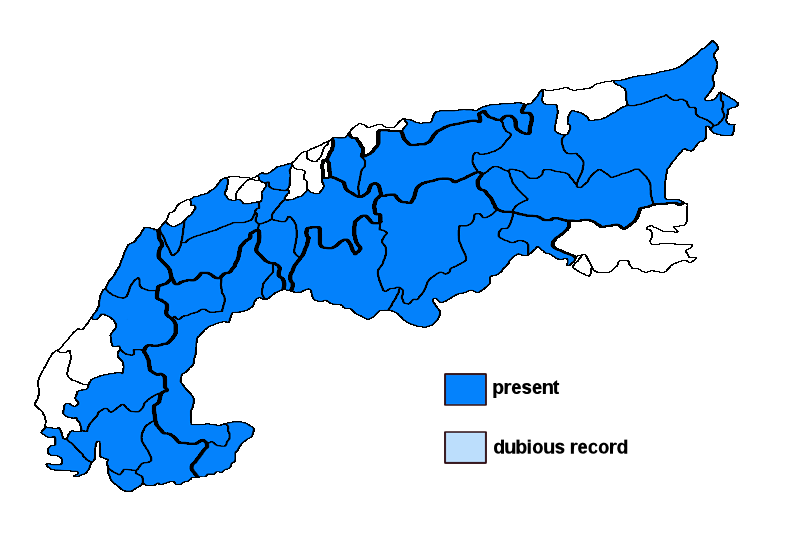Caloplaca arenaria (Pers.) Müll. Arg.
Syn.: Blastenia arenaria (Pers.) A. Massal., Blastenia lamprocheila (DC.) Arnold, Caloplaca craspedia (Ach.) Szatala, Caloplaca ferruginascens (Nyl.) H. Olivier, Caloplaca festiva (Ach.) Zwackh non auct., Caloplaca lamprocheila (DC.) Flagey, Lecanora lamprocheila (DC.) Nyl., Lichen arenarius Pers., Rufoplaca arenaria (Pers.) Arup, Søchting & Frödén
Lichenised.
Substrate: siliceous rocks, intermediate rocks (such as calciferous schists)
Altitudinal range: from the mesomediterranean belt (potential vegetation: evergreen broad-leaved forests dominated by Quercus ilex) to the alpine belt (potential vegetation: treeless Alpine grasslands and tundras, to the lower limit of perennial snow and the equilibrium line of glaciers)
Note: a holarctic lichen found on calciferous siliceous rocks, including walls, often overgrowing other crustose lichens; on the whole, a heterogeneous taxon in need of revision; widespread throughout the Alps.
Austria: Vorarlberg; Tirol; Salzburg; Kärnten; Steiermark; Niederösterreich (incl. Wien); Burgenland; Germany: Oberbayern; Switzerland: Bern; Graubünden; Schwyz; Ticino; Uri; Vaud; Valais; France: Alpes-de-Haute-Provence; Haute-Alpes; Alpes-Maritimes; Savoie; Haute-Savoie; Vaucluse; Var; Italy: Friuli; Veneto; Trentino Alto Adige; Lombardia; Piemonte; Valle d'Aosta; Liguria;





